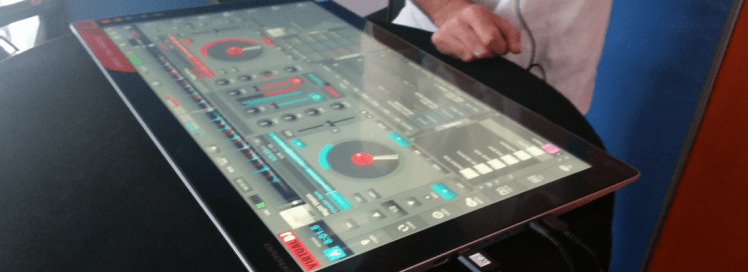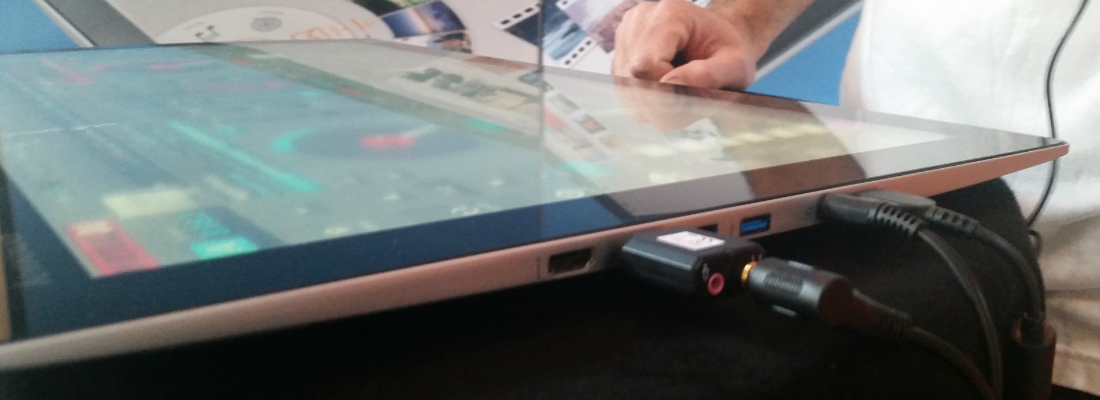During the Lenovo Yoga event in San Francisco, I got a chance to sit down with the Lenovo Yoga Home 900, the company’s hulking ‘portable desktop’ solution.
First off, this thing is technically portable, but it’s heavy. It’s essentially a slightly beefier 27-inch flatscreen monitor. The additional weight is owing to an entire tablet PC tucked inside the chassis. I definitely don’t see anyone breezily walking from room to room with this like they could with a laptop or a small tablet.
The left side offers three USB ports, an HDMI slot, and an audio out jack. It’s about as thin as the average flatscreen, which is a feat considering what Lenovo has packed inside of it. Power and volume controls are on the right side of the panel.
The back of the unit features a sturdy hinged stand, which seems to be spring-loaded. When the device is lying flat on its back the stand stays locked into the back of the unit, via a hinge. When the latch is undone, the stand comes loose. When the stand is out and the monitor is standing upright, the screen can be tilted if significant force is applied, yet the unit is stable enough to stay in place when I jab or swipe the screen.
The touchscreen seems about as responsive as that of most tablets, although there were no apps installed (such as Photoshop or Sketchbook), that would have allowed me to test the sensitivity to pressure. The Lenovo Yoga Home 900 is designed to allow multiple users to access the touchscreen at once, a feature another tech writer and I played around with. Using Lenovo’s Aura 3.0 touch interface, we were able to grab photos, but the unit seemed to have a difficult time telling if we were two people trying to snag separate elements on the screen, or a single user simply trying to resize an open image. I like the concept, but it seems figuring out who gets priority when touching the screen is an app-side challenge that software developers need to tackle.
Takeways
As an artist, I’m excited by the possibilities the Lenovo Yoga Home 900 represents for digital illustration, but until I know how much sensitivity there is on the touchscreen unit (if any), I’ll reserve judgement. Another issue is that Lenovo doesn’t seem to have any immediate plans to bring out a stylus for this unit. In order for it to become a substitute for a Wacom Cintiq, for example, the user is going to either need to look for a third-party stylus or enjoy finger painting.
Otherwise, this unit shows promise. I could see some cool stuff being developed as far as multi-player touch games. It could also be used as the hub in a home’s central location, for a family that is otherwise divided by their individual mobile devices. But is it a device the world wants right now? We’ll have to wait and see.
VentureBeat's mission is to be a digital town square for technical decision-makers to gain knowledge about transformative enterprise technology and transact. Learn More



